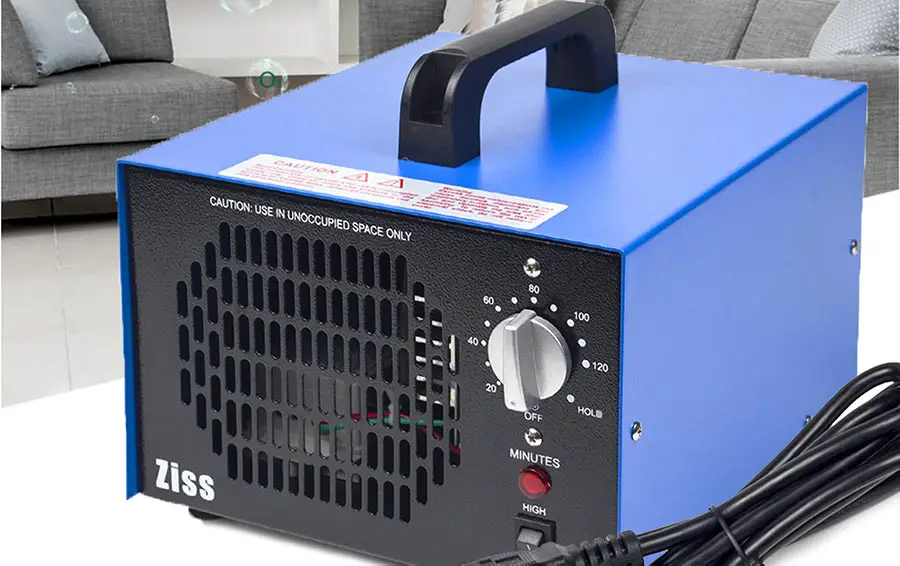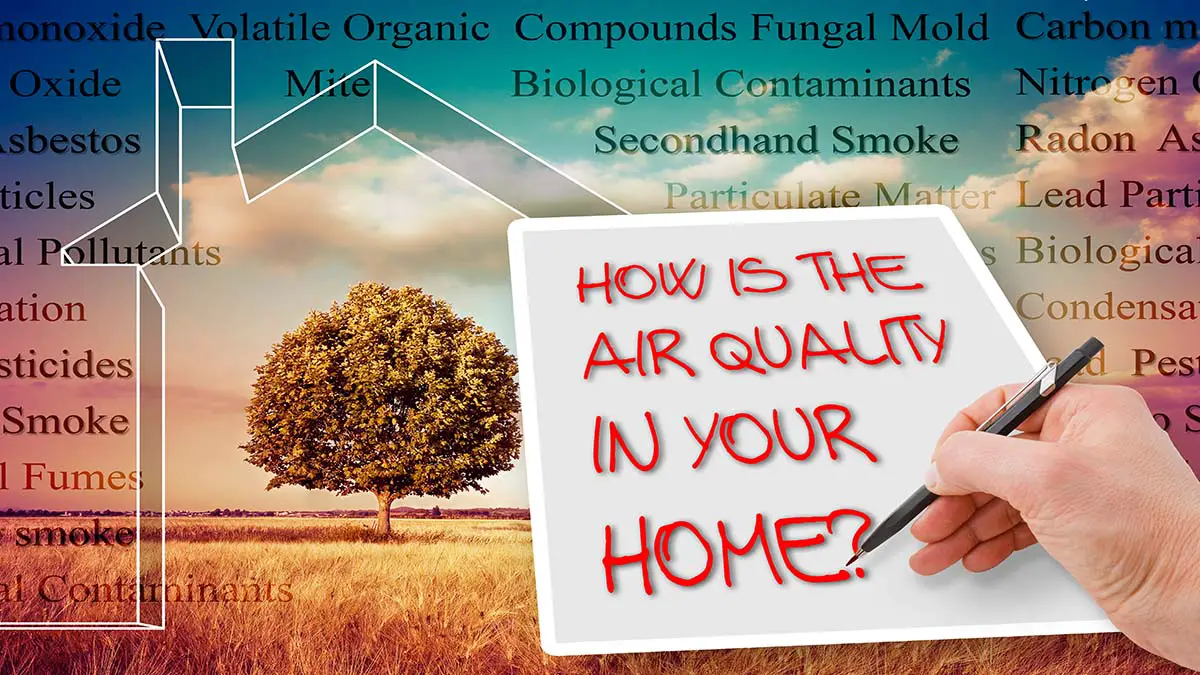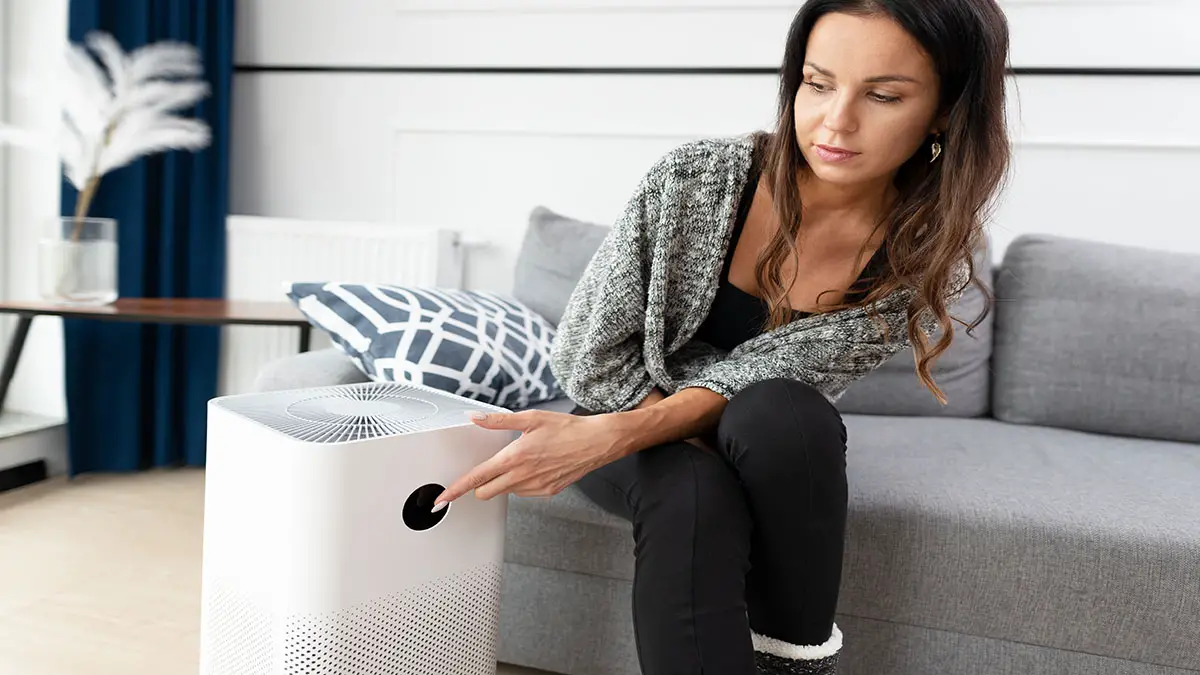
With all the health concerns circulating nowadays, more people are searching for ways to disinfect their homes. Ozone generators are now being marketed and sold as air cleaners for commercial and residential use. However, their is important information consumers need to be mindful of.
Ozone generators produce and distribute a toxic gas called ozone air cleaners for commercial and residential use. Ozone generators advertise to deodorize, disinfect, kill or remove dangerous or irritating airborne particles to improve indoor air quality. Ozone, at high concentrations, is unsafe to inhale and may damage the lungs. Therefore, the benefits of ozone are only applicable in a limited set of situations. Prolonged exposure to ozone is a severe risk to your health. Therefore, people are urged only to operate ozone generators for a short time and not be present in the room when in use.
How can you tell the difference? How do you know when you are harmfully exposed to ozone, and how can you reduce this exposure?
How Long To Run Ozone Generator?
An ozone generator should run about 3 to 8 hours, depending on the room size. To treat a whole house will take 25 to 30 hours of continuous operation to rid the air of most pollutants. You need to vacant the home while the ozone generator is operating and wait about 4 hours to allow the ozone to become breathable oxygen.
Ozone will remain in the air for 1 to 4 hours before the ozone will become breathable oxygen. It is recommended you wait 4 hours before returning to the home to allow the ozone time to dissipate. Please note, the ozone generator will kill airborne contaminants but not the source of the problem.
If your home has a heavy smoke odor, mold, mildew, or other issues, you’ll need to address the source of the problem to prevent reoccurrence.
What Is Ozone?
Ozone, also known as trioxygen, is a gas that contains three oxygen atoms. The chemical is volatile. Ozone is helpful in the stratosphere, as it serves as a shield for harmful ultraviolet light from the sun. However, ground-level ozone can be dangerous.
The Environmental Protection Agency warns that high levels of ozone are required to purify the air. However, the average ozone generator does not put off a high enough ozone discharge to meaningfully purify the air.
Can You Be In A House With An Ozone Machine?
To effectively clean air with an ozone machine, the machine must discharge unsafe to inhale. For this reason, it is not advised that you remain in a house with an ozone machine.
The United States military has used ozone machines in the process of COVID-19 sanitation. The military mechanical manuals state that the ozone machine user should vacate the premises where ozone generators are being used for sanitation.
Harmful Effects Of Ozone Cleaners
Adults and children will be affected by high levels of ozone. You can only breathe ozone at high levels for a short period. This period can be minutes or hours.
Why Is Ozone Harmful?
The Environmental Protection Agency explains that ozone is harmful to the body because you can use it to purify microbes. In addition, it can interact with organic material that makes up the body.
Harmful effects include the following:
- Eye irritation
- Nose and throat irritation
- Chest pains
- Coughing
Ozone creates the risk of premature death. In addition, vital research supports the theory that prolonged high-concentration ozone exposure decreases life expectancy.
Long-term risks include the following:
- Asthma attacks
- Increase risk of pulmonary inflammation
- A higher risk of respiratory infections
High levels of ozone can also affect the birth weight of infants. Research also indicates that prolonged exposure to ozone tends to increase respiratory issue hospitalizations.
The American Lung Association lists the people demographics at the highest risk of irritation from exposure to ozone. Children, teens, and the elderly are the most vulnerable age groups. People with pre-existing lung conditions, such as asthma or COPD, and weight conditions, such as obesity, are the health demographics at the highest risk.
Limited Safe Ozone Use Benefits
With so many health risks associated with prolonged ozone exposure, why do ozone machines exist? Do they have safe use benefits?
Ozone in small, controlled concentrations has been used for disinfection and high-intensity sanitation. Researchers have monitored the use of machines such as Brizzamar® on microbes. They studied the use of the machine for 10 minutes and intervals of one, two, and three hours. The results show a significant reduction in microbes after using the machine.
Because of this anti-microbial value, the United States Army Public Health Center has tested the use of ozone generators against COVID-19. However, the Army Public Health Center advises caution in this process. Ozone generators can be used in buildings, rooms, and vehicles.
How To Safely Use An Ozone Generator
You must vacate the premises where an ozone generator is in use. This includes adjoining spaces. You should also establish a recovery period before making a reentry.
The Occupational, Safety, and Health Administration, abbreviated OSHA, has established permissible exposure limits. These are abbreviated as PEL. In addition, OSHA has published a PEL manual to establish clear guidelines for the correct use for liters per minute, recommended transitional limit, sampling rate, and air volume.
What Can Ozone Be Used On?
While ozone is helpful for surface cleaning, ozone cannot be universally used on all surfaces. In addition, it can damage materials such as rubber, electrical wire coating, and fabrics.
Ozone Emitting Machines
Some machines will emit ozone as an unintentional byproduct. These include ionizers and electrostatic precipitators, and air cleaners. These air cleaners are designed to electrically charged particles in the air. They then pull the particles out of the air. These charges thereby clean the air.
Why Is Ozone Mostly Ineffective?
Ozone as an air purifier may work against microbes or infectious diseases. Yet, for air quality improvement, it has proven ineffective.
Ozone generators cannot eradicate odors effectively. The Air Resources Board of California cites evidence that ozone concentrations below health standards are ineffective in removing odor-causing chemicals.
Ozone also tends to react with chemicals in the air and thus form harmful byproducts.
Lastly, ozone cannot remove dust and pollen from your air.
Safer Alternatives To Ozone Purification
Cleaning the air within your home is essential. However, there are safer alternatives than ozone. Air cleaners that are non-ozone generating, non-ionizers, and are not filter cleaners with ionizing or ozone generating features are generally safe. Even then, it would be best if you were mindful of all air purifiers. Air purifiers can be ozone generators. Therefore, it would be best to consider an air purifier with a HEPA filter to limit this risk.
What Do I Look For In Ozone-Free Air Purifiers?
At this stage, you’re going to likely consider an ozone-free air purifier for any indoor air quality measures you take. But are ozone-free air purifiers a safer alternative? How do you know that you are making a good buy?
Consider room size before making a decision. Ultimately, the space you will need to use the air purifier in reflects on your decision. You have to match the air purifier to the room’s demand. Determine what your indoor air purification goals are.
The majority of air purifiers on the market have the range capacity to filter one room at a time.
Why Does My Air Purifier Need A HEPA Filter?
Your focus should be an air purifier that has a HEPA Filter. ‘What even is a HEPA filter?’ you may ask. The acrostic stands for high-efficiency particulate air filter. The United States Department of Energy uniquely designed these air filters.
HEPA filters can “theoretically” remove an estimated 99.97% of dust, pollen, bacteria, and airborne particles from the air. They are expected to be far more efficient than ozone generators are for regular home air cleaning goals.
The EPA made its estimations regarding HEPA filters based on Minimum Efficiency Reporting Values or MERV ratings. This means that the EPA estimated the theoretical efficiency of a HEPA filter based on its worst-case scenario performance.
What To Avoid
Marketing has a powerful influence over the air filter market. This fancy marketing is primarily why ozone generators are still popular on the market, even though they cannot safely execute most indoor air purification goals. Yet, even with ozone-free air purifiers, you have some homework to do to ensure you are getting the best, safest buy.
It is ill-advised to purchase an air filter that does not have an Energy Star listing or approval. In addition, it can be dangerous to use electronics that do not have a proper manufacture listing because the risk of an electric fire is higher with unlisted and therefore untested products.
Avoid air purification devices that use UV lights.
What To Look For
Once you’ve eliminated the things you don’t want in an air purifier, it’s time to start narrowing down the nice-to-haves for a buying decision. Consumers typically have a price point they will like to consider. Do you sacrifice quality for price? How do you know you are making the most well-informed decision, even on a budget?
Basic HEPA Facts
The HEPA Corporation manufactures submicron filtration systems that use both HEPA and ULPA filters. ULPA is an acrostic that stands for an ultra-low particulate air filter. ULPA standard filters remove an estimated 99.999% of particles down to 1.2 micrometers. As a result, ULPA filters down tinier particles than HEPA does, which is useful for specialized air cleaning applications.
For general purposes, HEPA filters are used to purify indoor air. This is because ULPA filters have a greater airflow restriction, are more expensive to operate, and generally have a shorter mechanical life span. Therefore, HEPA filters are considered optimal for most health application goals of air purification.
HEPA Filters And Allergy Relief
Research shows that HEPA filters have benefits for allergy relief. This is due to their ability to strain dust mites, mold spores, pollen, and other allergens out of the air. The recommended room to use HEPA filters for allergy relief is the bedroom because this is where one sleeps.
HEPA Filter Vacuum Cleaners
For lower-intensity air purification, you may consider a HEPA-supported vacuum cleaner. These vacuums are equipped with HEPA filters to limit the number of dust mites and other particles they omit back into the room’s air after cleaning.
Types of HEPA air cleaners
HEPA air cleaners provide a variety of types. From hospital rooftop units to energy savers, HEPA provides an assorted list of designs to choose from.
Typically, homeowners will choose a residential air cleaner. This product is efficient for filtering dust, mold, allergens, and airborne irritants such as smoke and gas.
Check Packaging For A CADR Rating
The value of air purifying products is generally communicated through the number of tests they’ve been subjected to. That’s why you’ll want to check air purifier packaging for a Clean Air Delivery Rate or CADR rating.
This rating is a good indicator of the quality of an air purifier product. Once you’ve eliminated harmful, market-hyped air filters from your list, comparing air filter quality comes down to functionality. Air filters with a posted CADR rating are communicating value because the CARD testing process is entirely voluntary. A posted rating on the product lets you know that the company is considerate enough to make this information available to its consumers.
Are CADR Ratings Limited?
Despite their usefulness to air purifier consumers, CADR ratings can’t tell you all you need to know about your air purifier. For example, CADR only tests the efficacy of air cleaners at their highest settings. Likewise, a CADR test may only focus on one part of an air purifier’s air cleaning mechanisms when the device may use more than one mechanism.
What Other Information Should I Get?
Since CADR ratings are limited, you should consider gathering other consumer information before purchasing an air filter. This can be in the form of hard and soft research.
Soft research includes word-of-mouth testimonies, such as product reviews on Amazon. These product reviews describe other buyer experiences but may not necessarily include a functional or science-backed breakdown of why an air filter product is less functional than another. Other soft research includes comparing the market brochure of several products and what they offer.
Marketing tries to sell you a product to profit a business. For this reason, the marketing literature will communicate the greatest perks of using a product. This literature is useful when comparing perks of different products but may not be as helpful in determining downsides.
Hard research includes looking through medical journals and engineering manuals for the air purification industry. These publications offer a more technical approach to explaining why an air purifier may not live up to its market hype.
Additional Air Cleaning Steps
Even with an air cleaner, you will still need to take some additional indoor cleaning steps to get maximum air quality.
Remodeling can be beneficial to air quality. Remove carpet and replace with wood or tile to limit the build-up of particles in carpets. Vacuum frequently, with a HEPA filtered vacuum if possible. Consider changing drapery styles to limit the collection of dust. Frequently wash bedding and keep upholstery under plastic coverings.
Air Purifying House Cleaning Tips
Frequently vacuuming and sanitizing furniture made of cloth materials can reduce the build-up of air pollutant particles. You should also frequently vacuum the air filter unit of your air conditioning system. Likewise, it is advised to vacuum in laundry rooms behind driers to avoid a build-up of fabric materials on laundry room surfaces.
Pet Care For Clean Indoor Air
In this same train of thought, frequently vacuuming pet beds and cleaning pet beds removes pet hair and dandruff particles from carpets and surfaces. If you are allergic to pet dandruff, outdoor pet housing may be the best option for your family.
Frequently bathe pets to remove harmful particles from their hair that can be returned to the air via shedding.
Additional options
You can also consider using other air quality control filters, such as furnace filters and dehumidifiers, to condition the air indoors.
Air Quality Is An Investment In Long Term Health
Investing in the quality of indoor air is an investment in long-term health. By avoiding harmful ozone-generating products and choosing safer options such as HEPA filters, you are making a conscious investment in the long-term health, safety, and quality of the breathing space within your home. This is why you will gather all the information you can before buying an air purifier and why you will take additional steps to complement air cleaners with extra air quality support.







